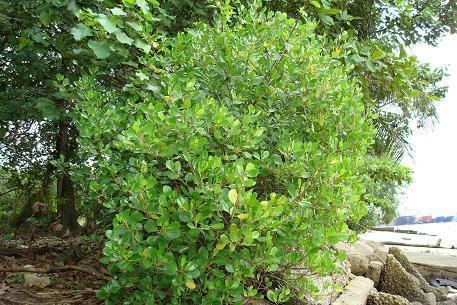Scientific name Scyphiphora Rank Genus | Clade Angiosperms | |
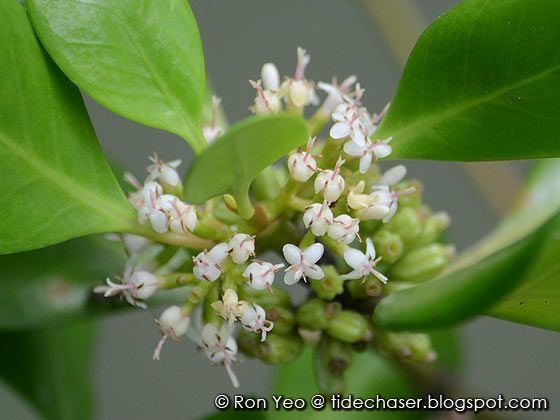 | ||
Similar Lumnitzera, Xylocarpus, Ceriops, Aegiceras, Rubiaceae | ||
Octonary ingredients of scyphiphora hydrophyllacea formuls pankaj oudhia s medicinal plant database
Scyphiphora is a monotypic genus of flowering plants in the Rubiaceae family. It is the only genus in the tribe Scyphiphoreae. The genus contains only one species, viz. Scyphiphora hydrophyllacea, which has a large distribution range from Madagascar, to tropical Asia and the western Pacific. It is a shrub of about 3 m (10 ft) and is often found in mangrove forests or sandy beaches. Its local common names include chengam in Malaysia, ngam in Thailand, nila or sagasa in the Philippines, and côi in Vietnam.
Contents
- Octonary ingredients of scyphiphora hydrophyllacea formuls pankaj oudhia s medicinal plant database
- Description
- Uses
- Culture
- Chemistry
- References
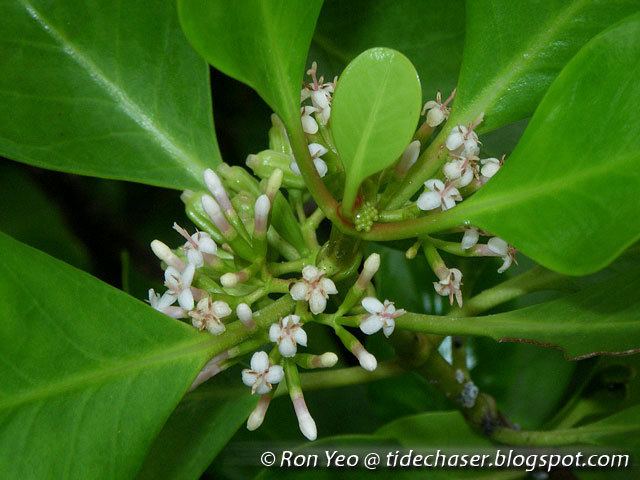
Description

Its leaves are opposite. The leaf blades are broad and drop-shaped. Its terminal buds and young leaves are coated with a varnish-like substance. The flowers are tubular and have four white lobes that are tinged pink. They are arranged in dense clusters. The fruits are elliptic and deeply ridged, becoming light brown and buoyant when ripe.
Uses
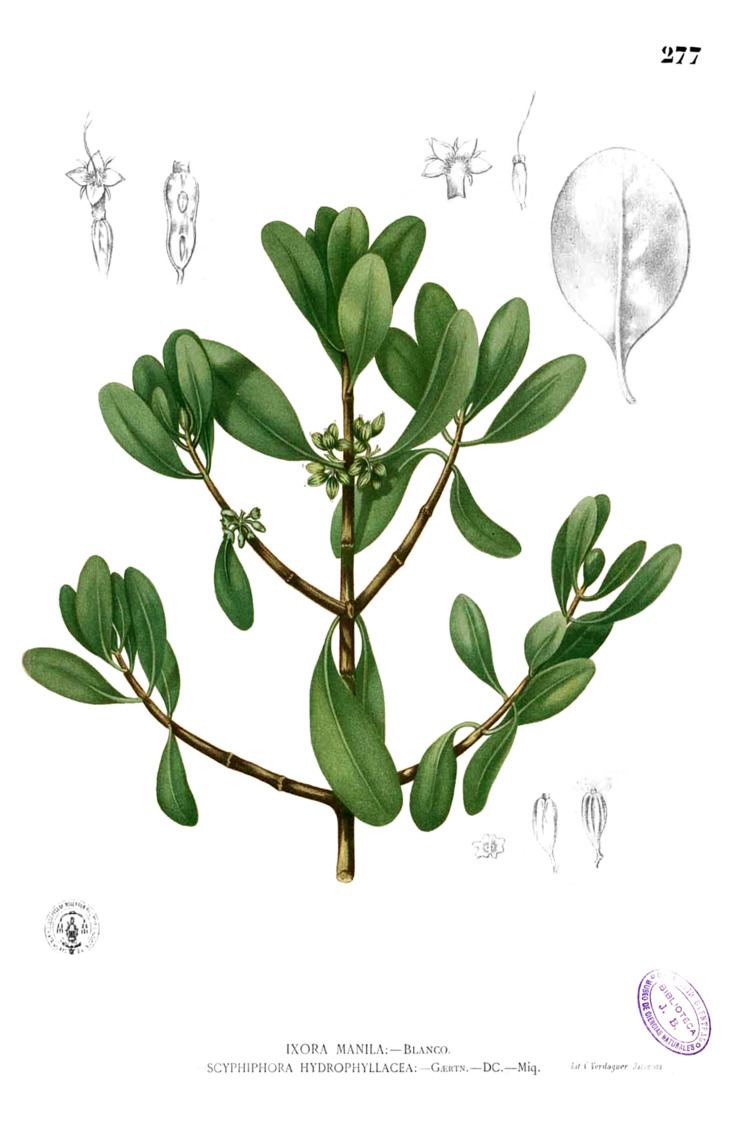
Its dark brown wood can be used to craft small objects. Leaf extracts are known to be helpful for stomach aches. The flowers can be used as a cleansing or whitening laundry agent.
Culture
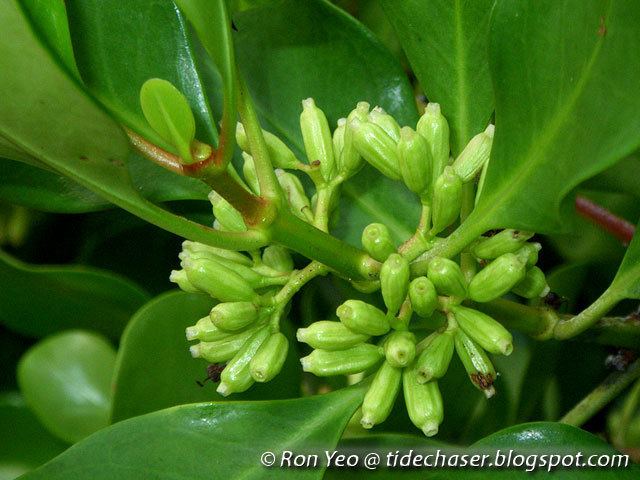
Manila, the capital city of the Philippines, derives its name from the nila because the shores of Manila Bay were once teeming with this shrub. The place was called "Maynila", which is Tagalog for "There is nila". The shrub's name in turn was probably derived from the Sanskrit word "nila" (नील), which means "indigo tree."
Chemistry
The plant contains friedelin, syringic acid, isoscopoletin, fraxetol, casuarinondiol and guaiacylglycerol-beta-ferulic acid ether.
